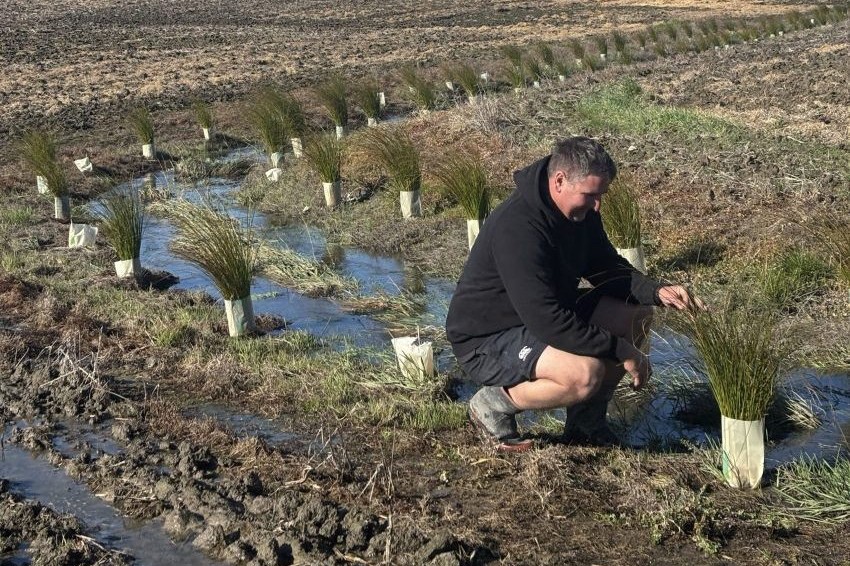Send stock asap when ready to go
As Omicron spreads through New Zealand, Country-Wide looks at the impact on killing space.

As Omicron spreads through New Zealand, Country-Wide looks at the impact on killing space.
By Jo Cuttance
If animals are ready for the meatworks then send them, Otago livestock agent Rob Fowler advises farmers worried about an Omicron outbreak in processing plants.
There was no use worrying about what would happen to meat processing plants when Omicron became widespread.
“Worrying about that was the same as worrying about a rugby score before the game was played.”
The best thing farmers could do was to get on with it and send stock when it was ready.
NZ meat workers union national secretary Daryl Carran believed processing plant workers were well-prepared for an omicron outbreak. Good procedures were put in place at the time of the original Covid outbreak.
“They wear more protective gear than a surgeon doing surgery.”
Carran said, it would not be as alarming as it could have been. There had been good consultation with the Government and very good protocols put in place to keep people safe.
However, what he thought would put pressure on the system was a combination of drought where farmers needed to offload stock, and a widespread Covid outbreak.
The meat companies best prepared for this would be those which had recognised staff needed to be well-paid, Carran said.
The entry point wage needed to start at a minimum production rate of $27/hour and there needed to be a clear path of retention to keep people in the industry, he said. This included finding a way to sustain staff during the winter months. Wages needed to be at a level where people could save money, and with a contract that banks would accept for someone wanting to buy a house.
Carran said it was a tough job, and meatworks needed to attract Kiwis into it.
Time to plan
Alliance Group general manager livestock and shareholder services Danny Hailes said the slower-than-expected spread of Omicron across the country had given them more time to plan for its arrival.
He did expect disruption over the coming months, but plans were in place to lessen the impact of Covid on their workforce and meet the needs of their farmers.
“How we respond to our people being required to self-isolate or a positive case being identified at a processing plant will depend on the circumstances.”
With an extensive plant network, they could move livestock between different regions, if and when required. The day and night shifts were also kept separate, he said.
Hailes said although plans were in place, they might be forced to scale back processing of available supply.
As a guide, only shareholders would be able to supply livestock when processing capacity is under pressure. There would also be priority processing for platinum and gold shareholders. Animal welfare issues, such as farmers experiencing dry conditions, would also be considered.
Waiting times would vary depending on plant, region and livestock mix requirements. As at February 9 the North Island average was two weeks for lambs and ewes, and four weeks for cattle. The South Island average was one to two weeks for lambs, three weeks for ewes, two to three weeks for cattle, and three weeks for deer. Farmers needed to keep in contact with their agent to be kept up to date with changes, he said.
Silver Fern Farms general manager supply chain Dan Boulton said they had a relatively late processing profile for ovine and bovine this year. This was because they were short of about 550 staff across their processing network.
Boulton said they had focused on unlocking all available processing capacity, this included upskilling workers to cover vital roles.
“To meet our primary objective of getting animals off farm, we may need to prioritise throughput rather than spending the extra time needed for some value cuts,” he said.
The extent to which this would be implemented would depend on the type of impact experienced at each site, combined with livestock flows in that region.
Boulton said navigating the impact of Covid over the last few years meant they had a strong business continuity planning process in place, particularly at processing sites. Animal welfare was a big focus. Weather and feed reports, along with onfarm pressures communicated to them via their livestock agents were regularly fed into the operational planning to ensure prioritisation of getting the right animals off farm as best they could manage.
Follow protocols
Farmers needed to understand the importance of getting stock to the plants and follow the protocols of trucking companies to ensure drivers were available.
If anyone on a farm was infected stock could still be picked up for processing. Livestock agents and the trucking company must be informed.
Hailes said the person or people infected were not to be present at the time of pick-up and all Covid protocols needed to be adhered to.
Transporting NZ chief executive Nick Leggett said Omicron could decimate the driver workforce, through drivers getting the virus and/or having to isolate because they had been exposed to it.
In January the trucking industry called out for more drivers. Leggett said they were looking for people who had a Class 2, 4, or 5 licence, suitable for a heavy vehicle. This was to link people with transport companies in their area to try and fill some of the gaps if and when the supply chain flow became critical.
“We might only be talking about a shift or two, but every licence holder who is willing and able to lend a hand, will help keep New Zealand’s supply chain running,” Leggett said.
Transporting NZ ran a live Covid-19 page on their website which provided key industry information about Covid-19.
- www.transporting.nz/industry-information/covid-19-disaster-management




